UV torches and resins.
Fly tyers eagerly embrace new materials and technologies and they were quick to experiment with Loon Knot Sense when it arrived on the market, along with the small torch which emitted ultraviolet light that quickly cured the resin.
Click in images to enlarge them
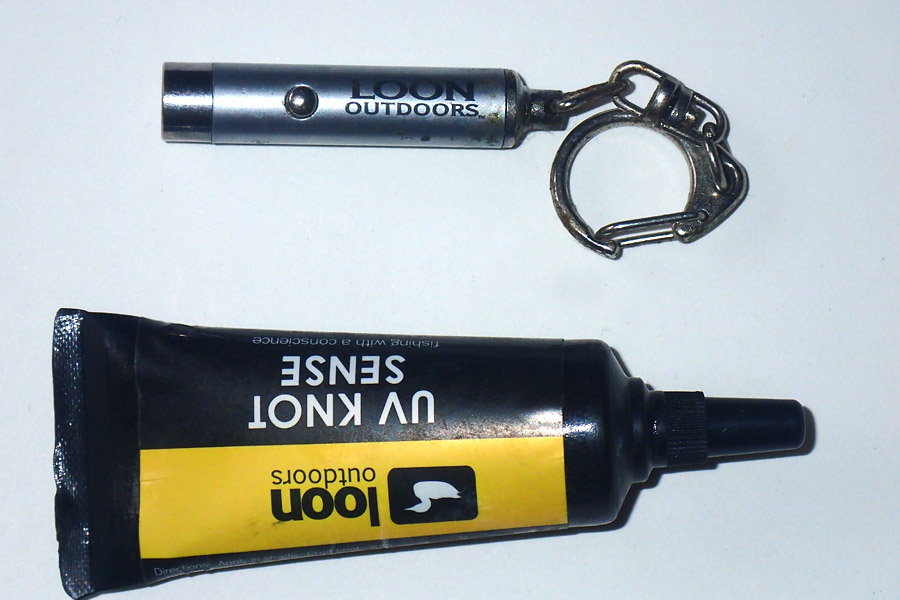
Where it all began – Loon Knot Sense and the first Loon UV torch
You can see evidence of this in Modern Midges – Tying the World’s Most Effective Patterns by Rick Takahashi and Jerry Hubka, which was published by Stackpole in 2009.
Brian Yamauchi, who took many of the photographs for Modern Midges, has done a lot of innovative work in this regard and you can see his black fly larva imitation on the Yummyflies website.
http://www.yummyflies.com/new-flies.html
I was slow to realise the potential of the generation of photo-activated acrylic resins which are cured by UV light that became available after Loon Knot Sense was first marketed. However, once I realised that they were a key to creating an effective imitation for the black fly larva, I started looking at the options available.
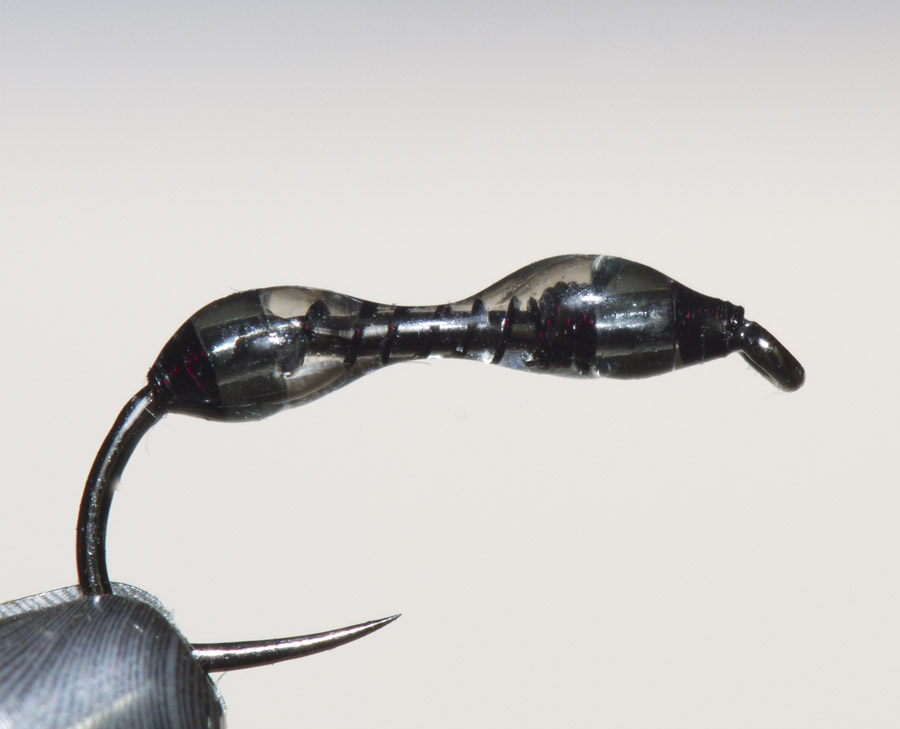
A recent Simulid pattern of mine using, inter alia, photo-activated acrylic resins
Behavioural invertebrate drift starts at 8 pm and peaks two hours later, but can also be constant and Simulium larvae along with Baetis mayfly nymphs are the major component of this drift, which means that they are familiar prey items for trout.
http://www.lifeinfreshwater.org.uk/Web%20pages/Rivers/Drift.htm
http://www.flyfishingdevon.co.uk/invertebrate-drift.shtml
When I started working on an imitation of the black fly larvae a year ago there were three resins and torches available, Loon, Clear Cure Goo and Deer Creek.
http://www.tomsutcliffe.co.za/fly-fishing/friend-s-articles/item/957-black-fly-%E2%80%93-the-challenge-by-ed-herbst.html
http://www.tomsutcliffe.co.za/fly-fishing/friend-s-articles/item/967-the-black-fly-challenge-%E2%80%93-a-postscript-ed-herbst-writes.html
I quickly settled on the latter combination although I found that each torch would cure resins from competing companies.
The technology was pioneered by dentists but their torches don’t cure the fly tying resins and neither do the torches found at hardware stores such as Builders Warehouse.
I found initially that the Deer Creek torch cured the resins more quickly than its competitors although the difference was quite small.
Ian Cox and Jay Smit did a comparison test between Loon and Deer Creek Diamond Fine which is interesting and confirmed my findings.
http://www.durbanflytyers.co.za/Articles/Tack_Free_Diamond_Fine_UV_Resin.pdf
However, as the market increased so did the R&D being done and through Morne Bayman of the African Fly Angler, I acquired the new torches which have just become available from Loon and Clear Cure Goo.
Tom Sutcliffe did a photographic comparison for me of the light thrown by the three torches.
I did not take cost into account but the most impressive torch for me was the Loon UV Mega Light.
https://www.loonoutdoors.com/products.html#uv-mega-light
It looks as though it is made by Maglite – a solid, beautifully manufactured product. It is powered by two AA batteries and seems to throw the strongest, most concentrated beam. It’s claimed output is 3.8 watts whereas the CGG claims slightly less.
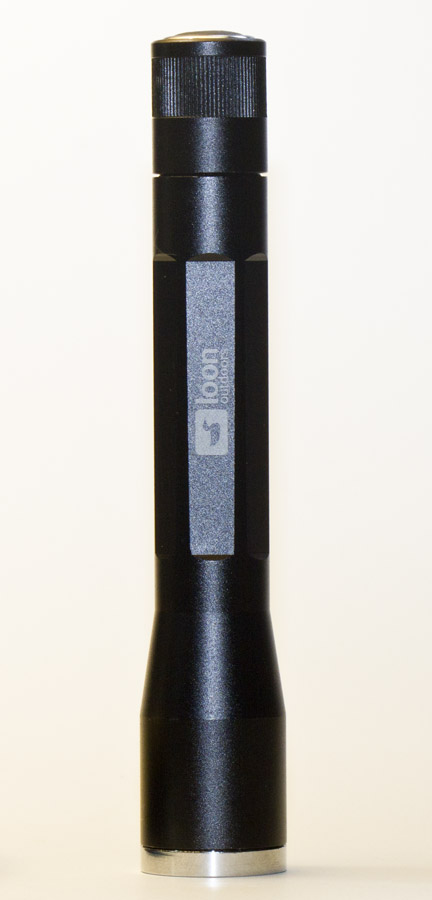
The Loon UV Mega Light (above) and the beam it throws (below)
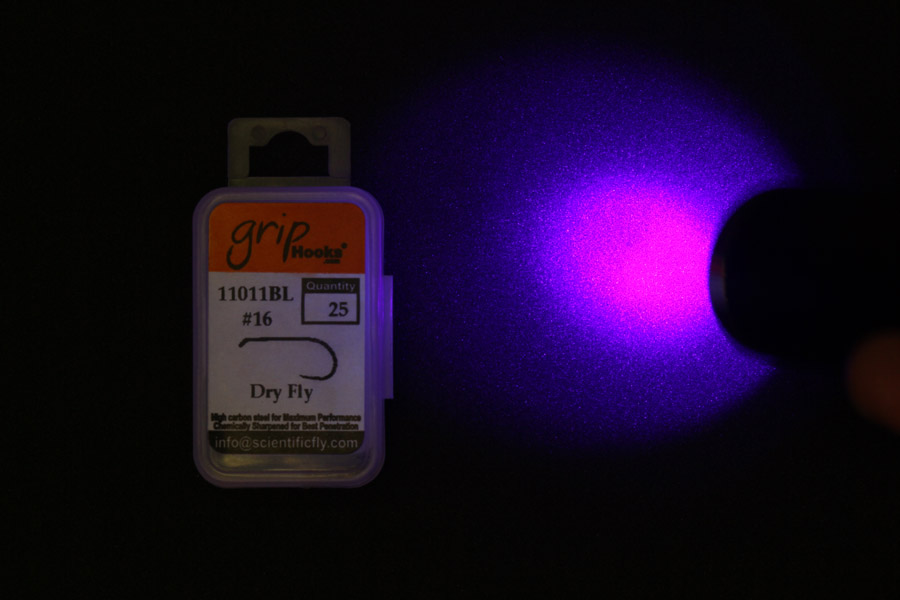
The Clear Cure Goo (CCG) Pro Plus torch is also a robustly-made product. It uses two CR123 lithium batteries which cost R50 each, but will probably last longer than the AA batteries in the Loon. When I was experimenting with photographing my Simulid Nymph in the dark to compare the difference between the Deer Creek Diamond Fine resin and the new Loon UV Flow resin, I found that the CCG torch got quite hot if left on for a few minutes and the heat came from the batteries. This will not be relevant in normal use however. It’s claimed output is 3 watts.
http://www.adh-fishing.com/fly-tying/fly-tying-materials/varnish-waxes-and-glues-/clear-cure-goo-pro-plus-curing-light

The CCG curing light (above) and the beam it throws (below)
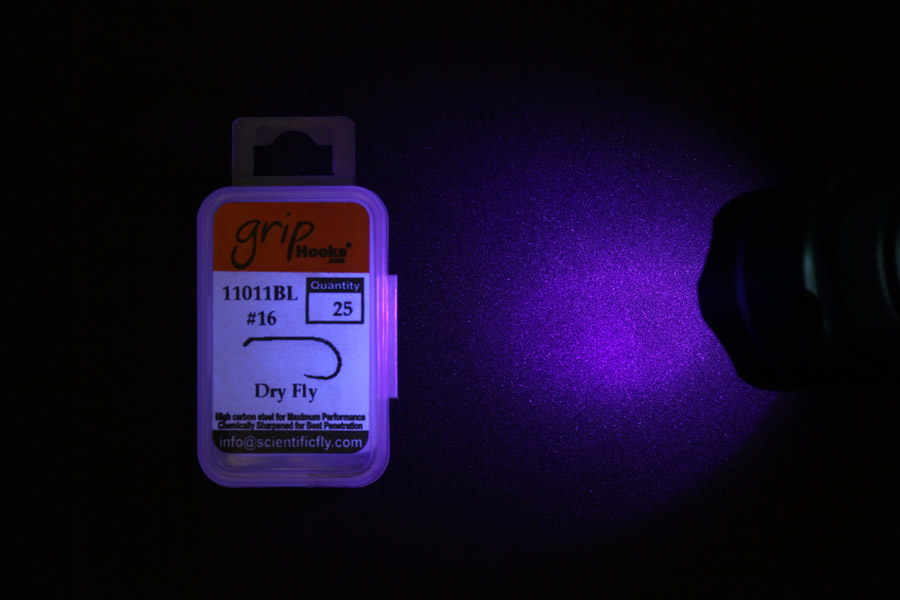
The Deer Creek UV curing light is powered by two AAA batteries and throws the narrowest beam. I am told that this is a laser rather than a conventional torch and two leading South African fly fishers who rate it very highly, as I do, are Gary Glen Young, a competitive fly fisher who has regularly attended the annual Fips-Mouche World Fly Fishing Championship as part of our national team in recent years and Alan Hobson of the Angler and Antelope in Somerset East.
https://www.youtube.com/watch?v=KhZUWNKPF-o
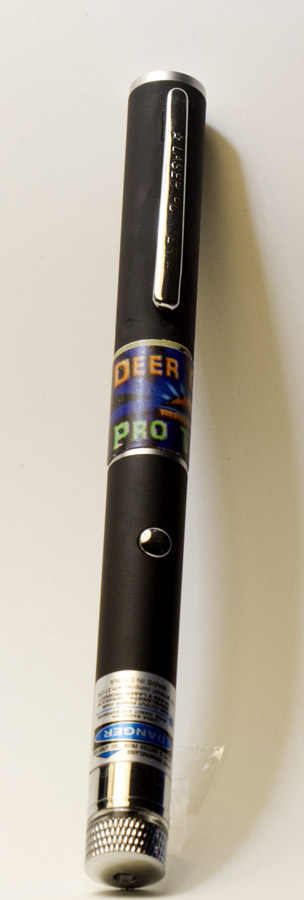
The Deer Creek torch and the beam it throws
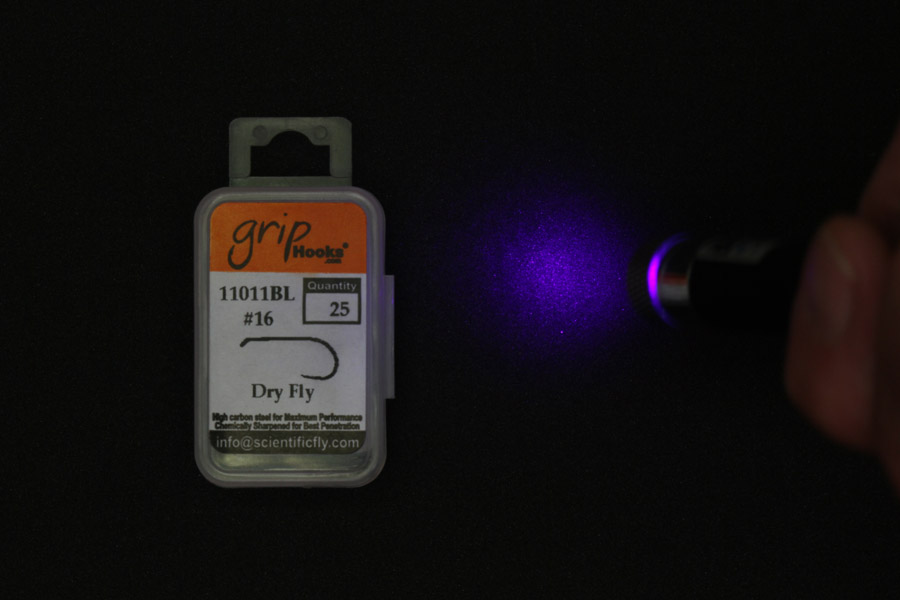
All three manufacturers caution against shining the UV light directly into the eyes so once I have applied the resin, I close my eyes, aim the torch at the fly with my right hand and rotate the vise head with my left. The Loon and CGG torches are easier to use for this because they throw a bigger beam. The flies cure in 5 – 10 seconds.
What was quite startling though was the difference between the Loon and Deer Creek resins when exposed to UV light. The Deer Creek product fluoresced far more strongly.
The images you see here were taken with manual aperture and shutter speed settings. Focusing was also done manually with the lights on. The light was then switched off and the UV light applied for the photograph.

The pattern made with Deer Creek resin literally glows under UV light

Under UV light the nymph made with Loon Flow resin has a more subtle fluorescence.
Only a comparison test with two nymphs being fished simultaneously would determine whether the stronger fluorescence of the Deer Creek resin offered a better strike rate.
I found that the Loon UV Flow was simply too thin and that, despite its thinner applicator tip which allowed more precise control of the drop, it often clogged the hook eye. Using the more viscous Loon UV Thin would obviate this problem.
I use a toothpick to apply the resin and what dentists call micro applicators - little brushes made by Ultradent - to distribute the resin over the fly. In Cape Town they are sold by Wright Millners (021 530 8800) which is based in Pinelands.
http://www.millners.co.za/product-catalogue/2009+Catalogue/150/2397
The UV light-cured acrylic resins are an exciting addition to the materials available to the fly tyer. They enable one to literally sculpt patterns which are translucent, durable and very effective as the various buzzer imitations which are now a staple for stillwater fly fishers illustrate
https://www.youtube.com/watch?v=KoKImce0M48
https://www.youtube.com/watch?v=olWhQsJvU6U
They enter the water with minimum disturbance, sink quickly and their translucence enables them to refract light.



